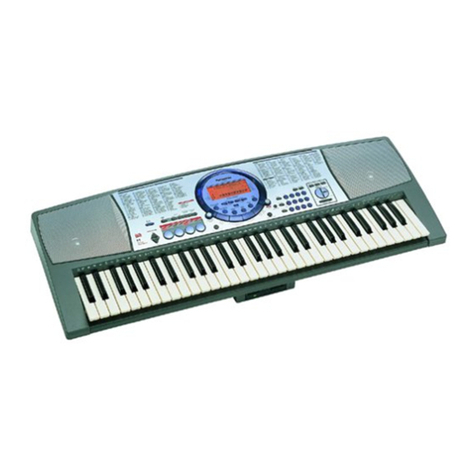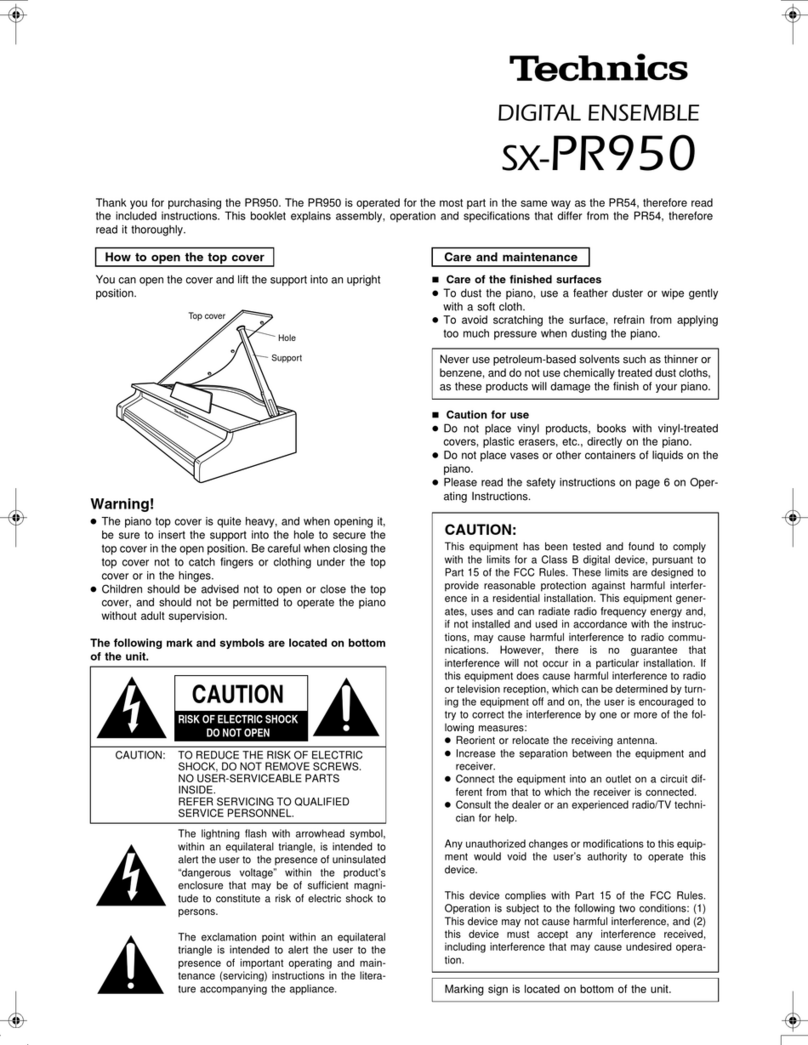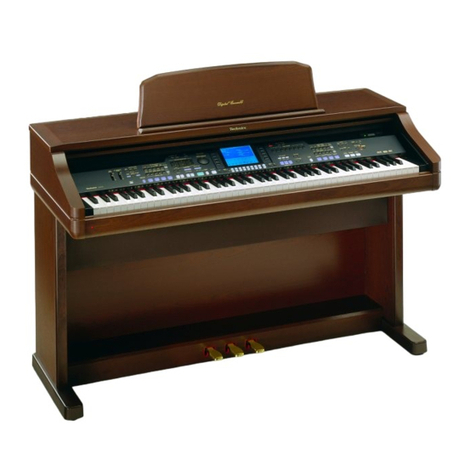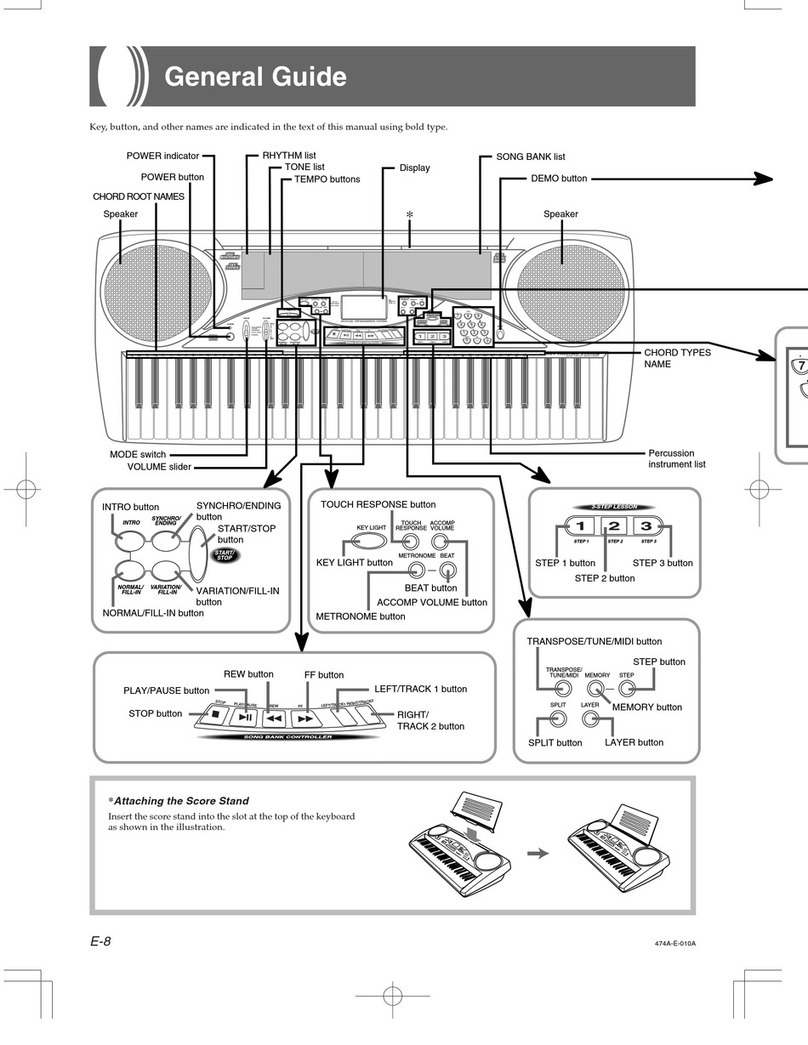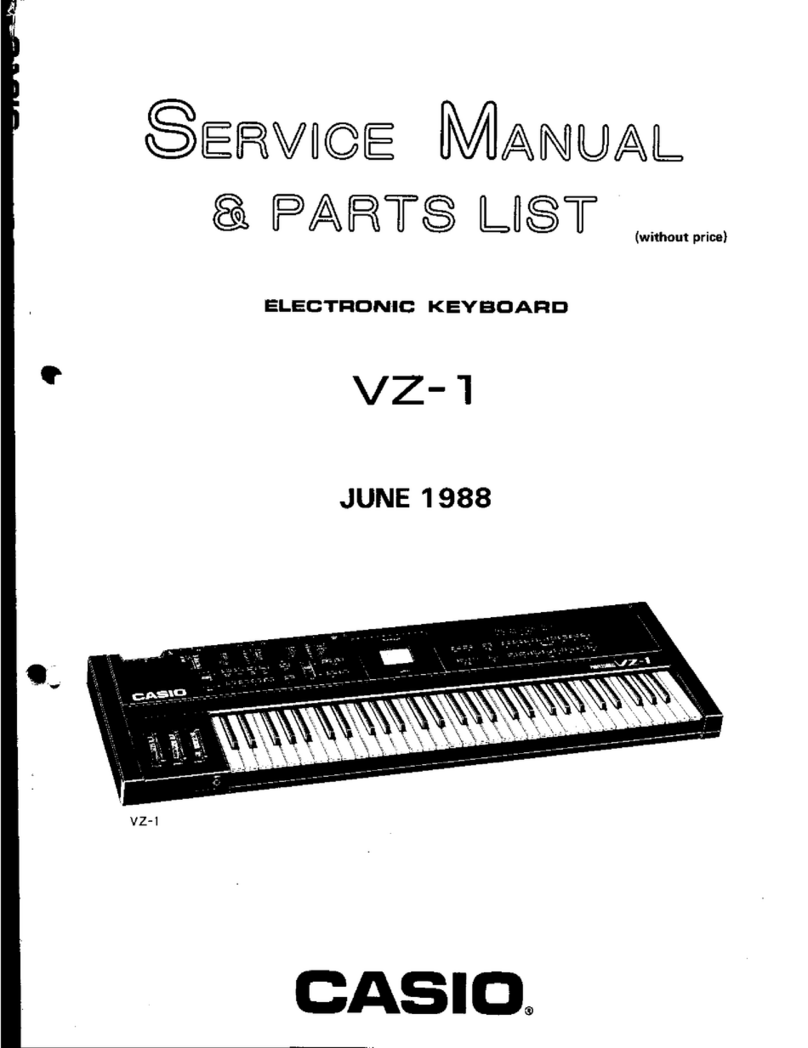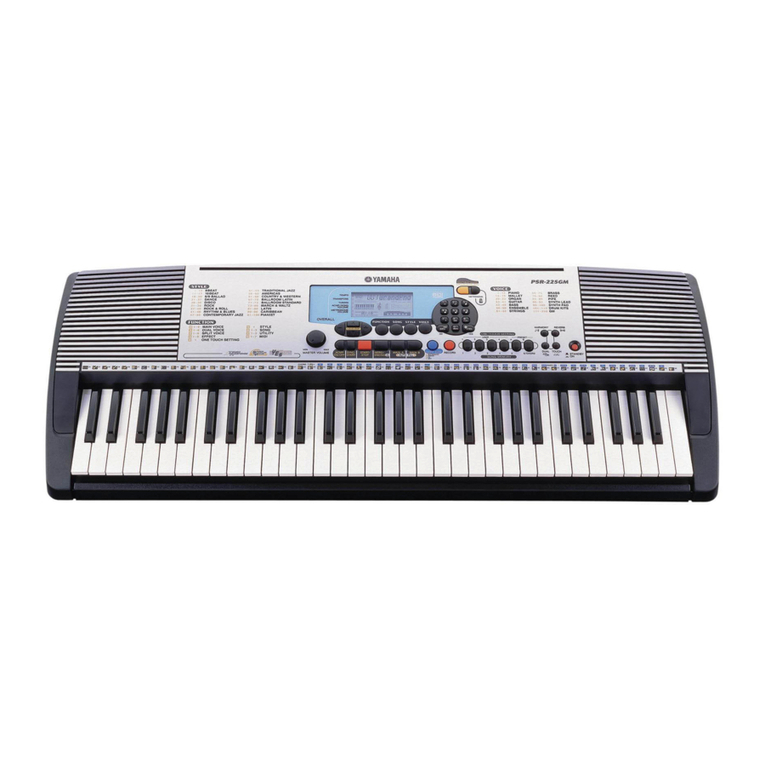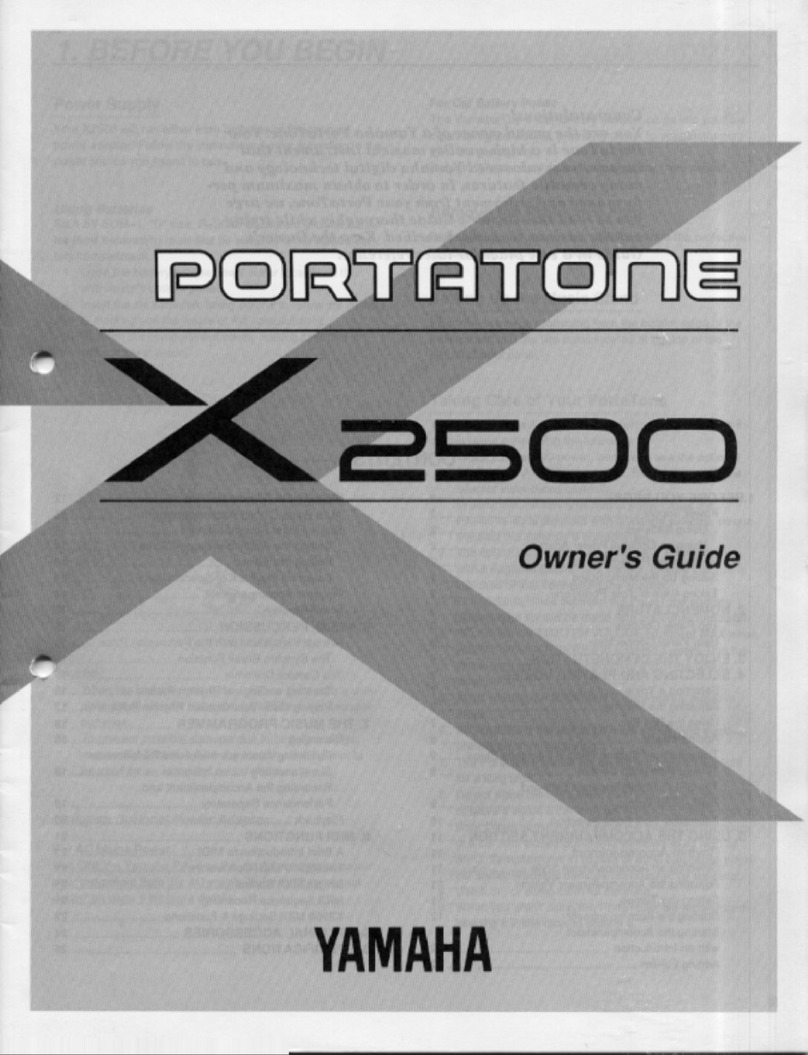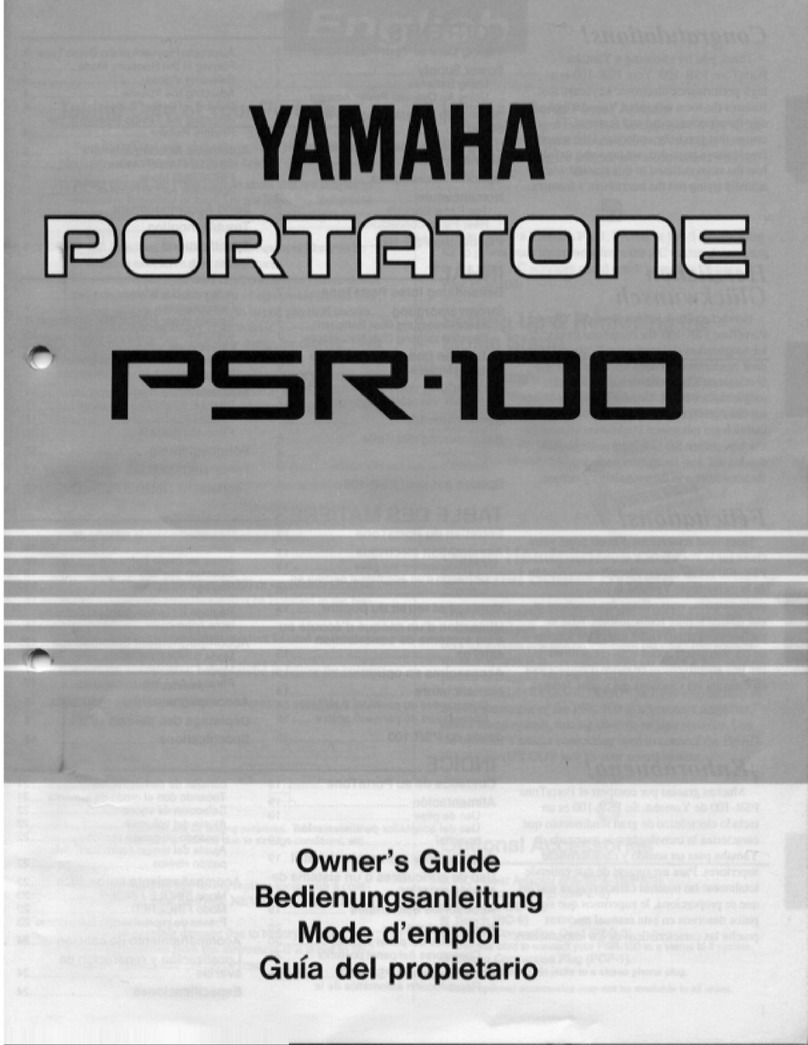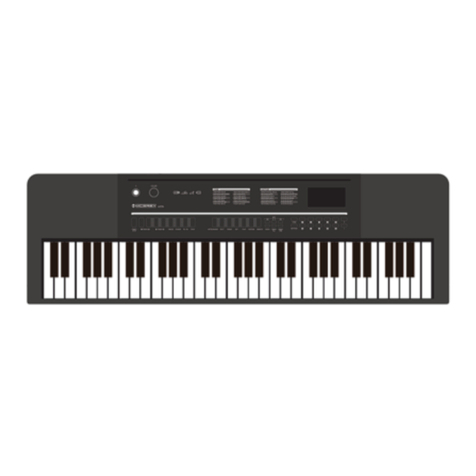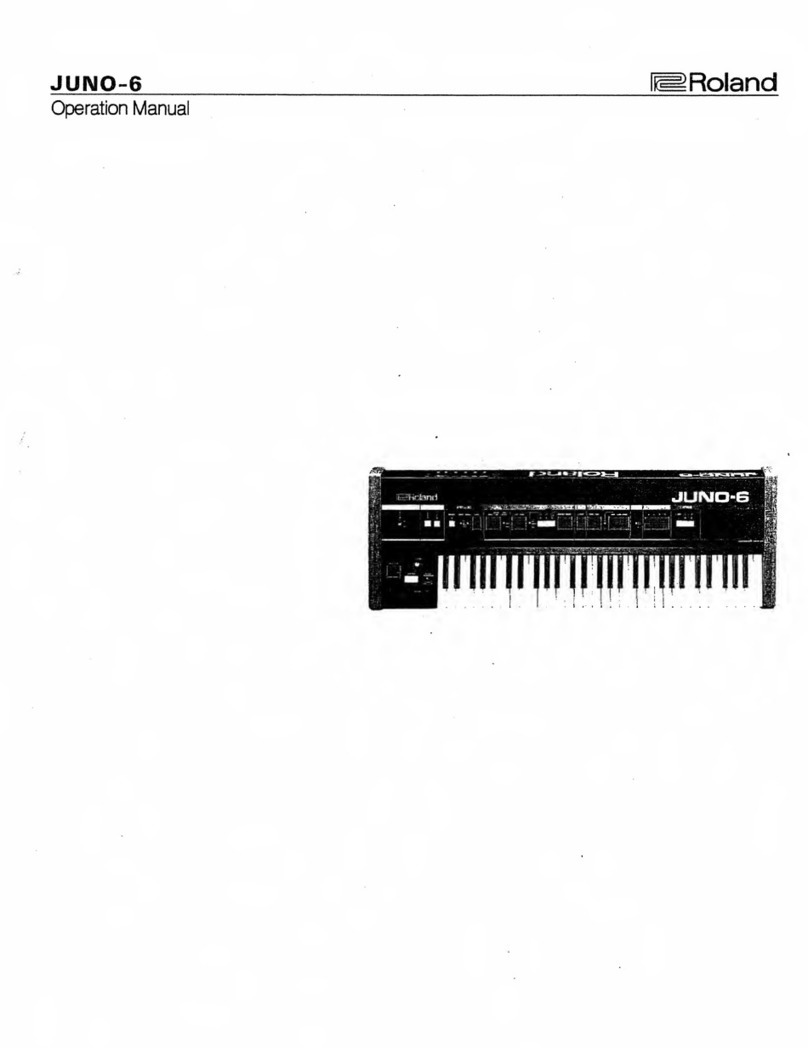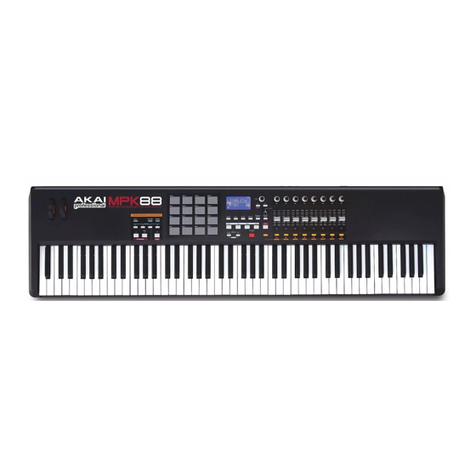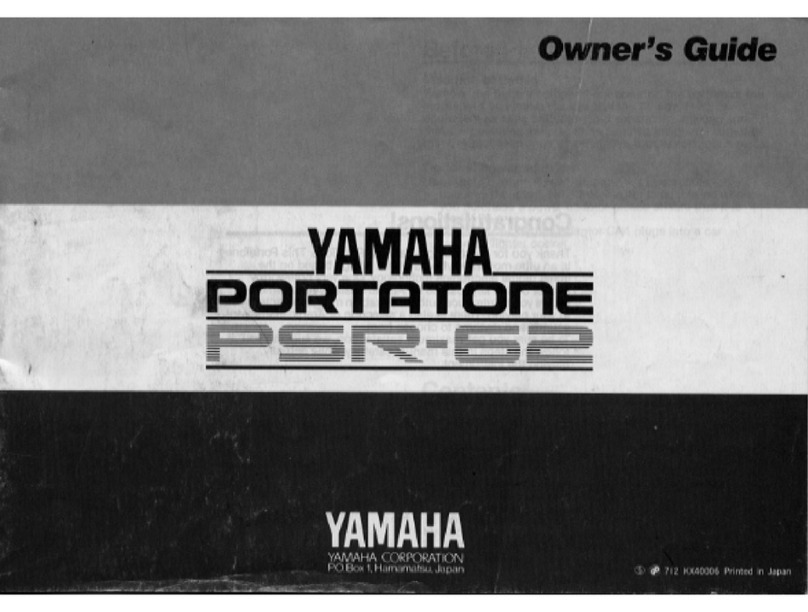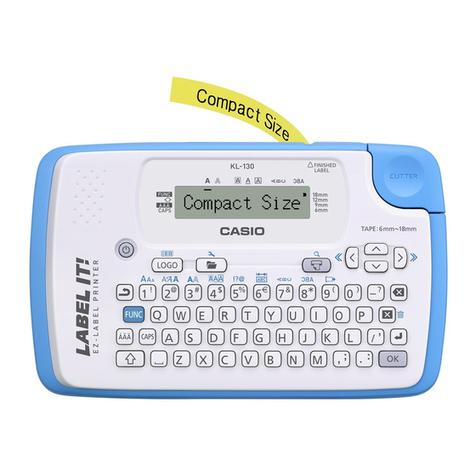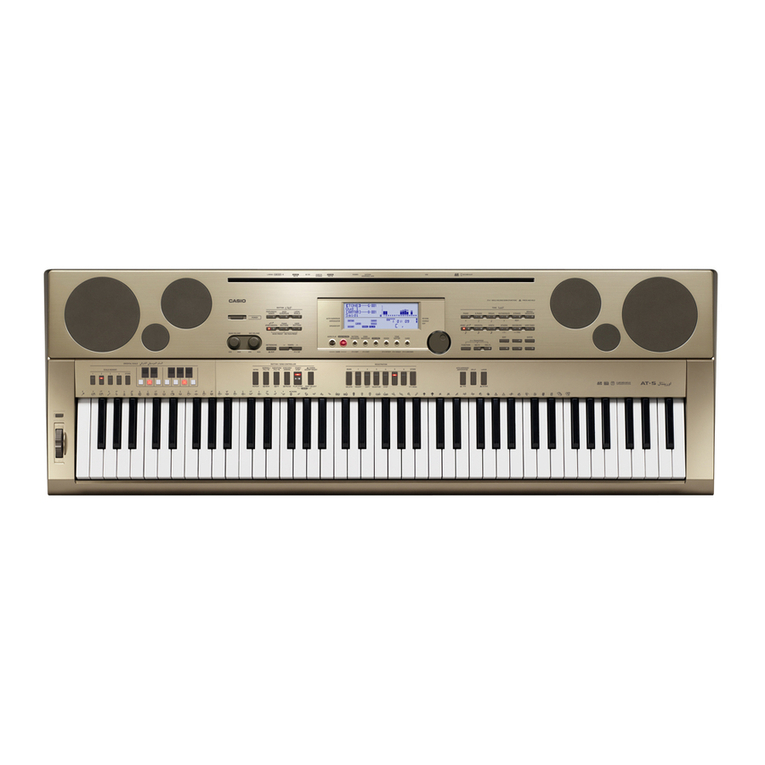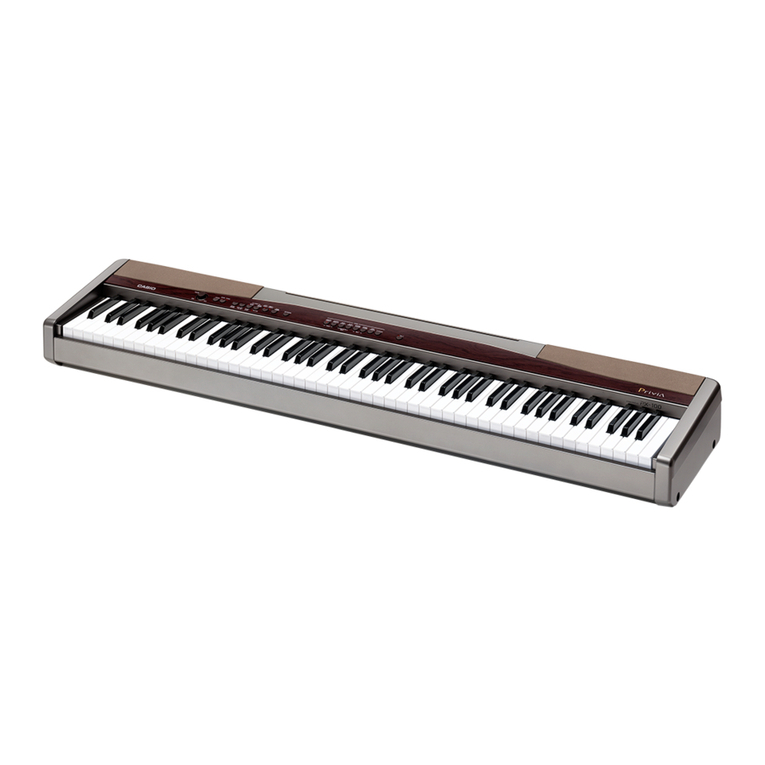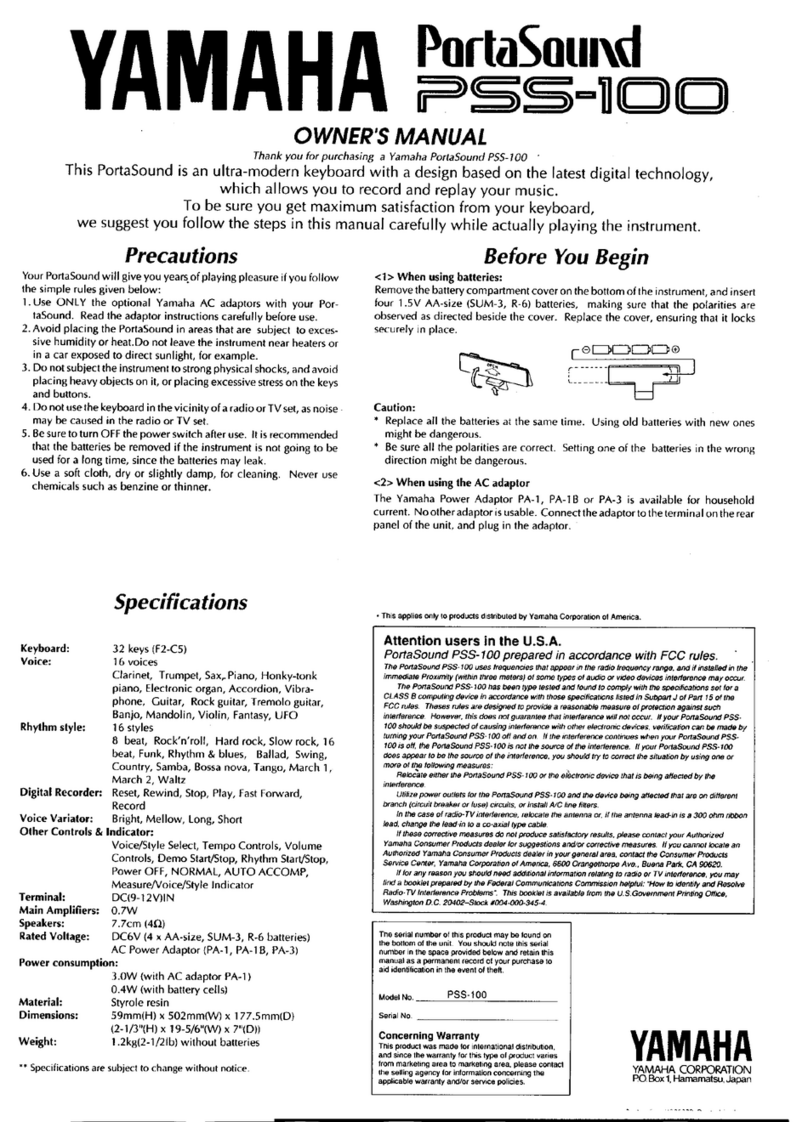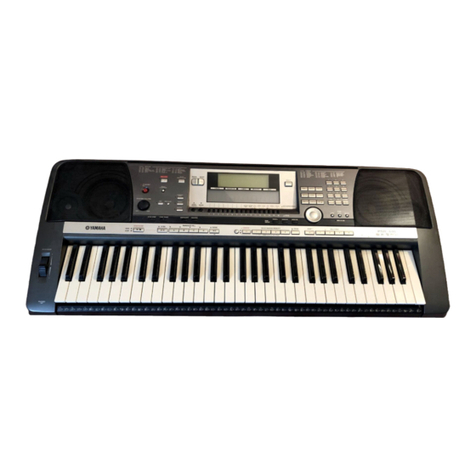
list are essential for safety. When replacing these parts, be sure to
use onlythe specified parts.
3. Use the specified types for internal wiring (double-insulated
wiring, etc.).
4. When replacing parts on the AC primaryside (power transformer,
electricswitch, electrical cord, noise-prevention condenser, etc.),
wind the lead wire and secure itbysoldering.
5. Donot let the wiring come into contact with heat-emitting devices
(fuse resistor, radiator plate, etc.).
6. When replacing the wiring, make sure that itisnot incontact with
the unfinished or rough edge of apart.
7. When replacing the power cord (except for the plug-intype), tug it
from various directions to confirm that itdoes not slipout of
place.
8. Spacing
Ifsoldering was done on the AC primarycircuit, confirm that the
interval between the soldered terminalsor between the terminal
and surrounding metallicparts isat least the minimum required
(between the primarycircuitand the chassis: atleast6.5mm;
between primarycircuitterminals: at least 4.0mm; between
primarycircuitterminalsand secondarycircuitterminals: at least
6.5mm.).
2. Safety Precaution
2.1. SafetyPrecaution
1. Before servicing, unplug the power cord to prevent an electric
shock.
2. When replacing parts, use onlythe manufacturer’srecommended
components for safety.
3. Check the condition of the power cord. Replace ifwear or damage
isevident.
4. After servicing, be sure to restore the lead dress, insulation
barriers, insulation papers, shields, etc.
5. Before returning the serviced equipment to the customer, be sure
5



